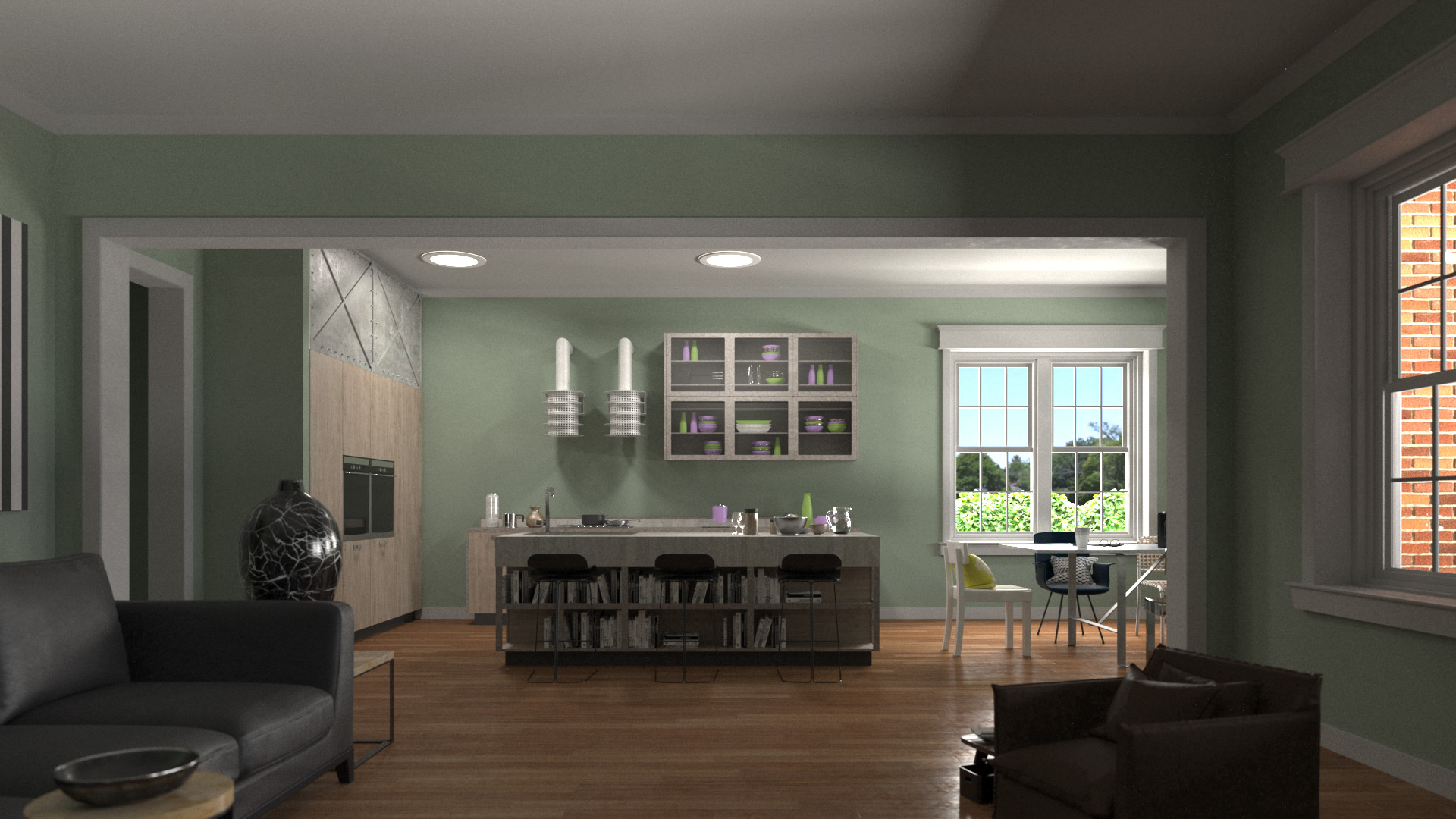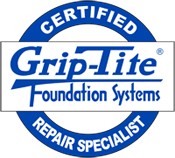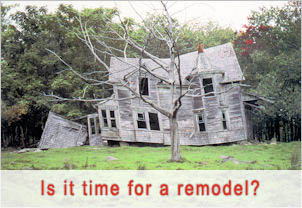
So, what’s the real cost of a kitchen remodel in the Bay Area—well, according to current market data, most homeowners spend $35K – $75K for a mid-range kitchen update. Labor rates, material prices and space size all sculpt the ultimate tab. Tile, cabinetry and appliances tend to account for most of the cost. Custom work or top brands push costs even higher. Permit fees and project delays can pile on additional costs. Homeowners selecting green materials or imports may get different figures. Knowing these ranges sets real plans and avoids sticker shock. If you’re undertaking this endeavor, understanding what drives these costs is crucial. The following section details the primary cost components and real-life examples.
Key Takeaways
- The real cost of a kitchen remodel in the Bay Area varies widely based on project scope, kitchen size and materials. Deep budgeting grounds all renovations with reasonable expectations.
- Remodel budgets broken down into design, labor, materials, appliances, and permits allow homeowners to efficiently allocate funds and steer clear of surprises during the project.
- Labor and materials costs in the Bay Area are impacted by regional economic influences, local vendor pricing, and regulatory needs – so it’s essential to investigate and prepare for location-specific obstacles.
- Opting for budget-friendly upgrades and intelligent material swaps—such as energy-saving appliances or eco-friendly surfaces—can turn up the style and the longevity without turning up the price.
- Leveraging seasoned expertise and keeping open communication with contractors, designers and suppliers keeps projects on time and quality work on track.
- By focusing on smart, functional upgrades and tracking your remodel, you can boost resale value and have excellent reference points for future renovations or sales.
Bay Area Kitchen Remodel Costs
Bay Area kitchen remodel prices are some of the highest, if not the highest, in the world because of skilled labor shortages, demand for gourmet touches and complicated local regulations. The median full remodel is $125,000 to $350,000, but big projects in high-end neighborhoods can easily dwarf that. Labor is 30-40% and location — e.g., historic districts — can bump the budget because of additional review and compliance steps. Homeowners who reserve that 20% above initial estimates and keep a close eye on expenses are the ones who report being more satisfied with their final project.
Minor Refresh
Minor Kitchen Refresh: This level is all about easy, budget-friendly updates that don’t involve changing the structure. Painting cabinets, swapping out fixtures or updating lighting can make things look new without much investment. For instance, cabinet repaint or handles cost far less than cabinet replacement, with simple upgrades averaging $15,000 to $40,000. These sorts of projects retain the majority of the existing floor plan and cabinetry, which keeps labor and material costs low.
Small updates provide big returns, as Bay Area homeowners recover approximately 84% of their investment. These little updates allow you to increase your kitchen’s visual and functional interest on a more modest budget. Thinking in terms of small updates keeps you from going too big, which is important in a market where the prices can get out of control fast.
Mid-Range Remodel
A mid-range remodel is more than skin deep, usually involving appliances, semi-custom cabinetry and new countertops. It strikes a balance between style and function and typically runs from $60,000 to $125,000. Mid-range projects will change the kitchen layout, but without major structural changes.
Cooperating by choosing mid-tier finishes and energy-efficient appliances kept the cost manageable. A lot of people go for quartz countertops and tile backsplashes. Financing — home equity loans and the like — are plentiful to extend the outlay, making these remodels achievable for numerous Bay Area inhabitants.
Major Overhaul
We’re talking full layout changes, new plumbing, upgraded electrical, and high-end custom cabinetry for the major overhauls. These begin at $200,000, increasing for elaborate floor plans or high-end touches. Structural changes, like taking down walls or relocating sinks, add a lot to the price tag.
Pro services—architects, engineers, the specialized contractors—are necessary for compliance and quality. Custom cabinets by themselves can require 8-12 weeks to build, and 2-4 month contractor wait lists are typical. Delays and unexpected problems can add to expenses, so a contingency fund is essential.
Luxury Project
Luxury kitchens include custom cabinets, high end appliances, and stone surfaces with budgets beginning at $300,000 and typically significantly more. These kitchens feature built-in smart systems, commercial-grade appliances and artisan finishes. It’s about quality, uniqueness and resale value.
Going high end can sometimes appeal to buyers and bump up Bay Area home values. Trusted contractors bring your vision and investment to life. For luxury projects, realistic budgeting means planning for every detail, from appliance upgrades to rare materials.
Why Bay Area Costs Differ
Bay Area kitchen remodel costs are influenced by specific economic forces, region-specific demand, local labor market dynamics and material availability. All of these factors act independently but complement one another, layering on top of one another towards the final price tag. Regional regulations and urban constraints complicate the picture even further, so costs can vary significantly from neighborhood to neighborhood.
Labor Rates
Labor is a dominant cost driver in Bay Area kitchen remodels, with San Francisco wages frequently accounting for 30-40% of a project’s total spend. These rates are some of the highest in the nation, particularly in core cities. Places such as San Francisco and Oakland charge premium rates versus the more suburban Peninsula towns, but all of them feel the same pressures upward.
Skilled labor shortages are endemic. When you couple that with a thriving construction market and a shortage of skilled tradespeople, contractors can ask for higher prices. Homeowners who prefer licensed electricians, plumbers, or structural specialists have to cover the cost of their skill and the peace of mind that their work is properly certified. Employing unlicensed labor might reduce price but increases danger, both for quality and regulation.
Labor is something that needs to be considered in your remodel budget with caution. Underestimating these expenses will cause your project to stall, run over budget, or butcher the craftsmanship.
Material Sourcing
Material sourcing in the Bay Area has its own cost variables. Local suppliers serve a market that prefers upscale finishes, custom cabinetry and imported appliances – all increasing costs. Certain vendors will provide bulk discounts for basics, but specialty materials and design-forward elements are priced at a premium.
Transportation costs are another worry. In particular, materials might have to be transported in from out of state, particularly if they’re custom or environmentally-friendly, which adds to costs. Sustainable alternatives, such as reclaimed stone or FSC-certified hardware, attract numerous Bay Area residents but can be pricier than the conventional counterparts.
Materials selection is always a tradeoff between quality, cost and accessibility. Choosing premium materials might increase a home’s price, but it’ll blow budgets fast.
Local Regulations
Local building codes and permitting rules constitute a huge cost factor. The Bay Area’s multi-level regulations, particularly in historic or compact urban areas, can determine everything from design to construction schedules. Building permits are needed on most remodels too, running from a few hundred up to thousands of dollars, and can take weeks or even months for approval.
Strict compliance is not optional. Regulations might mandate particular build techniques, affect design freedom, or incite additional inspections. There’s delay for sign-offs or code workarounds–which contribute to cost and stress.

Deconstructing Your Budget
Kitchen remodels are serious business, they tend to be decade-plus time frames. Bay Area costs can vary dramatically, influenced by design, labor, and materials decisions. Carefully budgeting for each of your core categories — design, labor, materials — keeps surprises at bay. The most realistic budget includes a 15–20% contingency. The following are suggested allocations:
- 10–15% for design and permits
- 30–40% for labor and construction
- 30–40% for cabinets, countertops, appliances, and fixtures
- 15–20% for contingency and unforeseen expenses
Monitoring your outlays throughout and scaling back as plans shift can prevent budgetary stress and ensure the remodel stays on track.
Design and Permits
Design fees, permits etc. Often overlooked but necessary for compliance and planning. Most designers work on a flat fee or percentage of your project so make this clear up front. Collaborating with designers helps you next align your goals with your budget, making decisions that strike a balance between fashion and expense. Don’t forget permitting, which can still bog things down — in the Bay Area, it’s not uncommon for approvals to take weeks. Rank your design changes in order of importance and leave the small stuff open so you remain within budget.
Labor and Construction
Labor is almost always the largest portion of a kitchen remodel, and Bay Area rates top the list due to demand and COL. Anticipate labor contributing 30–40% of your budget. Don’t forget that you should always have a contingency fund because sneaky deal breakers like old wiring or plumbing are lurking. Efficiency counts—an experienced crew can cut the schedule and reduce the expense. Budget for the timespan — long timelines strain everyday life and increase cost.
Cabinets and Countertops
Option | Typical Cost (per metre) | Durability | Notes |
Stock Cabinets | $400–$800 | Moderate | Quick install |
Semi-Custom Cabinets | $800–$1,200 | Good | More choices |
Custom Cabinets | $1,500–$2,500+ | High | Unique fit, costly |
Laminate Countertops | $100–$300 | Low | Budget-friendly |
Quartz Countertops | $400–$800 | High | Durable, mid-price |
Stone Countertops | $800–$2,000+ | Very High | Premium, heavy |
Installation fees for both can be 10–20% of materials cost. Custom cabinets fit odd spaces but add to cost and lead times.
Appliances and Fixtures
Reserve a distinct line in your budget for appliances — consider energy-efficient models to decrease future utility costs. Fixtures—faucets, sinks, and lighting—vary wildly in price, so shop around for styles that fit your design and budget. High-end appliances might translate to a higher initial investment, but they tend to pay off in the long run in terms of dependability and savings. Don’t forget to include delivery and installation as those charges can add up, particularly for larger appliances.
The Unseen Costs
It’s the hidden costs that you can’t escape. Structural surprises—water damage, outdated systems—can compel plan changes and increase your bill. Sometimes, design tweaks mid-project translate to more fees or new permits. Cleanup and hauling away old materials are easy to miss but essential for a safe finish. A cost breakdown and project timeline eliminate surprises and stress.
The “Good, Better, Best” Reality
The “good, better, best” reality of this is a common way to measure options for a kitchen remodel. It categorizes alternatives into good, better, and best to make it simpler to understand what you’re paying for. Costs track these levels, but so does value. For most the trick is finding the balance between what looks and feels good with what meets the budget and long-term requirements. Some just want the “best” for their home, which can translate into stretching finances or dragging out decisions. Others are okay with ‘good’ but regret afterwards that they could have done better. The sweet spot is different for each of us, defined by style, function, and the amount of change you desire. Good sometimes trumps better. Fewer high-impact upgrades can be more valuable than thinly spreading money. Ultimately, every remodel is a tradeoff, and the ‘best’ is always personal.
Smart Material Swaps
- Laminate countertops with stone-like finishes — sharp looking at a bargain price.
- Quartz composite is durable, low maintenance and cheaper than natural stone.
- Porcelain tile floors can look like wood or stone, but are less expensive and simple to clean.
- Recycled wood for counters or floors brings character and cuts down on waste.
- Use recycled glass tiles for backsplashes—durable and eco-friendly.
- Junkyards and craigslist can result in some truly special, cheap discoveries.
Sourcing from local suppliers or secondhand shops can take your budget a long way. Combining fresh and reclaimed materials keeps the remodel affordable and personalized.
Appliance Tiers
Appliances come in three categories. Entry-level (“good”) ranges and fridges pocket dollars but might overlook some features. Mid-tier (“better”) models straddle cost and function, sirening to most homeowners. Luxury (“best”) appliances have sophisticated controls and flattering styling but cost a premium.
Warranty coverage is more significant in the mid and upper tiers. A solid service plan can save headaches down the road. Every once in a while, brands will discount bundles—purchase a few different appliances and the price is reduced. Value comes from matching appliance quality to your cooking habits—not just the brand.
Cabinetry Choices
Stock cabinets are the least expensive, and come in a relatively small selection of sizes and finishes. Semi-custom cabinets give you more choices in design and color, while custom cabinets will accommodate any space but are the most expensive.
Cabinet style defines the kitchen’s appearance as much as counters or floors. Easy hardware swaps—such as brushed steel pulls—can enhance a standard kitchen layout. Don’t overlook functionality; deep drawers or pull-out shelves are a real bonus.
Consider how much you cook, store and entertain. Because the right cabinets back your life — not your look.
Navigating the Process
Bay Area kitchen remodeling is a complex endeavor, and it really comes down to solid planning, reasonable expectations and open communication with your contractor. Homeowners pay more here than in most places in the world, with average projects beginning at about $30,000 for modest refreshes, and luxury conversions exceeding $75,000. Figuring out beyond price, the process — steps of the endeavor — can help you avoid the typical stumbles and get things moving.
- Plan ahead, start with a clean project brief and budget — you don’t want any big surprises.
- Scope creep: Define roles and responsibilities with your contractor.
- Maintain frequent updates—weekly meetings or written summaries work well.
- Request specific decision timelines.
- Tackle worries up front — to prevent late or costly changes.
Finding Your Team
- A design-build firm can help unite design and construction for one-stop project management.
- These teams manage planning, design, permits and build phases, minimizing transition mistakes and delays.
- Homeowners should check references and past projects, newer and older, for consistent quality.
- Search for comprehensive, clear agreements describing payment terms, milestones and guarantees.
A good contract sets clear expectations and safeguards both sides if there’s a dispute.
The Timeline Myth
A lot of people anticipate a remodel to go quick, but the majority of projects run over because of unforeseen problems or last-minute custom adjustments. Design and planning itself can take 2–4 weeks. Demolition could be a week, and construction and installation can take 7–10 weeks, particularly if you have a complicated layout or have to move structural elements.
Make achievable goals. If you’re moving a wall or appliances, plumbing or wiring alterations can require additional time. Slow permit approval or supply chain delays are typical. Be proactive — contact your team, stay on top of issues as they arise, and remain nimble.
Securing Permits
Securing the proper permits is crucial and can be lengthy — particularly in code-strict areas such as the East Bay. Begin by understanding your local requirements—skipping a permit can result in fines or forced modifications down the road.
Permit reviews can hold up a project for weeks, so submit applications well in advance and schedule according to approval timelines. Being on top of your paperwork and communication will minimize bottlenecks.

Maximizing Your Investment
Planning is everything to maximize a kitchen remodel, particularly in a high-cost region like the Bay Area. The most effective way to push resale value is by solving actual issues and updating outdated kitchens. If your kitchen has really broken appliances or layout nightmares, these fixes provide the biggest return. As an example, if the cabinets are falling apart or the wiring is unsafe, getting these basics right is more worth doing than choosing fancy finishes. Most buyers want a kitchen that is safe, easy to use and not stuck in an old style.
Use trumps beauty. Buyers love upgrades such as additional storage, enhanced lighting and new energy efficient appliances. Swapping out old plumbing or wiring is smart, even if it is not immediately apparent. These shifts help make the room safer and more economical to operate in the long run. Throw in soft-close drawers, deep sinks or smart lighting and these can be minor changes but they do a lot to how the kitchen feels day to day. Here in the Bay Area and other Pacific states, you can recoup around 92.9% of a minor or medium-size kitchen update when you sell – one of the best rates in the country.
It’s knowing how to spend your budget that makes the difference. They’re happier if they expect to spend 20% more than their initial impression. This includes lurking expenses such as remediating unsafe wiring, aging pipes, or abatement of hazardous materials. These can consume 5-8% of your budget so it’s good to think proactively. Contractors typically mark up 10-20% for materials, so remember that when considering quotes. Attempt to begin your project in winter because labor and materials could be cheaper. Good contractors are booked 4 months in advance, so get a head start!
Track your remodel from start to finish. Photograph, note-save, receipt-keep. This assists if you ever sell your place or have to make fixes down the road. It provides you documentation of what was done if you have to deal with insurance or future buyers.
Conclusion
To plan a kitchen remodel in the bay area, set a real budget and know the real costs. Labor and materials rates remain elevated here, so even minor upgrades can accumulate quickly. Seek out a contractor who understands local regulations and can provide honest answers, not fuzzy estimates. Check your requirements—perhaps new cabinets or simply a coat of paint—then select what suits your life and budget. Small upgrades such as smart taps or LED lights can add value without a high price tag. Every kitchen is unique, so leverage the information—not the marketing—to help inform your decisions. If you want more real stories or breakdowns, visit my blog or shoot your questions. Let’s get your next project smooth and smart.
Frequently Asked Questions
1. What is the average cost of a kitchen remodel in the Bay Area?
With an average cost of €45-90,000. That depends on size, materials and customization level.
2. Why are kitchen remodels more expensive in the Bay Area?
High labor rates, building codes, and expensive materials push the price up. Local demand and a contractors’ shortage contribute to the expense, as well.
3. How can I create a realistic kitchen remodel budget?
Make a list of your absolute must-haves and establish a budget. Add a 10–20% contingency for surprises. Talk to local specialists for actual quotes.
4. What does “Good, Better, Best” mean for kitchen remodeling?
It describes three quality levels: “Good” uses basic materials, “Better” adds upgrades, and “Best” offers premium finishes. Prices go up from there.
5. How long does a typical kitchen remodel take in the Bay Area?
Most projects are 6–12 weeks. Bigger remodels or custom work can take longer because of permits and material delays.
6. How can I maximize my kitchen remodel investment?
Emphasize good cabinets and energy efficient appliances. Pick classic designs. As these selections add home value and decrease future costs.
7. Are permits required for Bay Area kitchen remodels?
Yup, you need permits, like, almost always. They keep it safe and keep it code. Just be sure to always check with your local building authority before breaking ground.
Your Dream Custom & Energy-Efficient Kitchen Remodel by Mares & Dow Construction & Skylights – Let’s Create the Heart of Your Home
Transform your kitchen into a stylish, functional, and energy-efficient space with a custom remodel from Mares & Dow Construction & Skylights. With over 40 years of experience, we specialize in kitchen designs that blend beauty, functionality, and sustainability while complementing your home’s character and lifestyle.
Whether you’re envisioning a gourmet chef’s kitchen, a modern open-concept layout, or an eco-friendly upgrade with the latest energy-saving appliances, we customize every detail to match your vision, needs, and long-term goals.
Key benefits of our custom & energy-efficient kitchen remodeling services include:
- Designing a kitchen that’s tailored to your cooking, entertaining, and storage needs
- Boosting your home’s value with expert craftsmanship and modern functionality
- Incorporating energy-efficient appliances, lighting, and materials for lower utility costs and a greener footprint
Proudly serving Contra Costa County—including Alamo, Danville, Orinda, Martinez, and San Ramon—Mares & Dow Construction & Skylights is your trusted partner for kitchens that are as beautiful as they are practical.
Contact Mares & Dow Construction & Skylights today for a free, no-obligation quote and let’s bring your dream kitchen to life!
Disclaimer
The materials available on this website are for informational and educational purposes only and are not intended to provide construction, legal, or professional advice. You should consult with a qualified general contractor or industry professional for advice concerning any specific construction project, remodeling plan, or structural concern. Do not act or refrain from acting based on any content included on this site without seeking appropriate professional guidance. The information presented on this website may not reflect the most current building codes, regulations, or industry best practices. No action should be taken in reliance on the information on this website. We disclaim all liability for actions taken or not taken based on any or all of the contents of this site to the fullest extent permitted by law.





 based on
based on 

